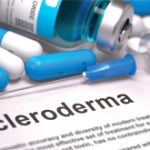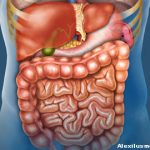As for endoscopic and surgical options, “there’s really limited data” on whether these work, he said.
Some new therapies on the horizon using electrical stimulation to increase sphincter pressure selectively and a magnet system to increase sphincter pressure also are worth looking out for, he said.
Gastric Dysfunction
For this problem, lifestyle changes should include small-volume, soft-diet, and low-fat meals, along with liquid supplements, Dr. Clarke said.
Prokinetics are the main therapy, he said, with erythromycin the most potent. The efficacy of the drug can tend to trail off with use, so Dr. Clarke recommends treatment for 25 days then a 5-day break before restarting. Metoclopramide, he suggests, should be used with liquid dosing and at the lowest possible dose. Domperidone can be used after submitting a special U.S. Food and Drug Administration (FDA) application, and cisapride was pulled from the market 13 years ago because of a link to significant QT prolongation, but is available for compassionate use, he said.
He said that ginger, shown to improve gastric emptying, might be worth a trial. Myotomy and gastric electrical stimulation has shown some promise, but there are no data in scleroderma specifically.
Watermelon Stomach (Gastric Antral Vascular Ectasia [GAVE])
Treatments are based on “very small case series…there’s not a lot of information to guide use of these,” Dr. Clarke said, but options include argon plasma coagulation, which can be done during a procedure like a colonoscopy while a patient is sedated and involves using argon gas and electrical current to seal bleeding tissue; and cryotherapy, which allows quick treatment of a large area of stomach lining.
Small Intestinal Involvement
Lifestyle changes are also the first choice for treatment here, and prokinetic therapy is the next step—“although the data that suggest that this helps with small bowel dysfunction are certainly less robust” than with stomach involvement, Dr. Clarke said. Octreotide is one therapy, and Dr. Clarke said he generally uses 50 micrograms subcutaneously at night; he cautioned that higher doses tend to decrease stomach emptying. Pryridostigmine acts as a whole gut prokinetic, but there are no data within scleroderma. Dr. Clarke suggests starting with 30 mg before meals for a week, then move to 60 mg if the patient is doing well.
Bacterial therapy is also an option, decreasing gut bacterial contents. This is recommended by EUSTAR but with no guidelines for length of treatment or which agents to use, although Dr. Clarke said he will generally use ciprofloxacin, metronidazole, or rifaximin.



